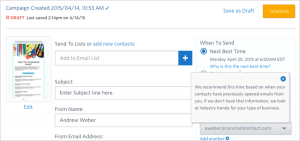
Best practices in web design never stand still. The fundamentals may stay the same – great functionality, compelling layout and engaging content – but as the internet evolves and user expectations change, so must our approach to developing websites.
Since the uptake of mobile technology, clients are more focussed on responsive and easy-to-use technology than flashy gimmicks which no longer impress. Recognising these new requirements is fundamental to great design and a happy client. Follow these best practices for 2016 and you shouldn’t go wrong.
Be responsive
Smartphones have now overtaken laptops and desktops as the number one device for browsing the web. With this trend showing no signs of slowing, it’s never been more important to be responsive. In other words, your design should be optimised to display and function on a variety of screen sizes. Neglect this new era of functionality and your client will probably look elsewhere.
Design for touch
As with the above, it’s essential to design all elements of the website with the mobile user in mind. Navigating a webpage using our fingers instead of a mouse, requires more touchable components and larger buttons. The challenge is providing a platform which doesn’t have menus or links overlapping each other or mistakenly opening a wrong window.
Enhance the user experience
User experience has never been more important. With current shifts in the way we use technology, consumers now expect far more from a platform or website. Fail to cater to these requirements and your client will surely lose out to the competition.
During every stage of the design process, it’s important to ask yourself whether the website serves its purpose quickly and efficiently. Not only should it be easy to navigate, users should have all the information they need on brand and company ethos without having to search for it.
Design for ease
The interface may be as user-friendly as possible, but without a visually simplistic design to guide a user from one page to the next, the resulting website will have very little bounce rate.
For this reason, an intuitive layout must be at the heart of your design. From big and bold background templates to grid/card patterns, there’s plenty of elements that can support navigation whilst adding character.
Simplify your forms
The current theme is ease-of-use at every stage. This includes information request windows which must be as simplistic as every other aspect of the site. Don’t expect users to fill out endless details on their mobile devices.
Instead, opt for smaller forms which only require the most important information – name and email will usually suffice. Make use of simple typefaces, always include auto-fill capability and anything else to optimize the process.
These are just a few of the key best practices for 2016. Consider each and every one during the design process to stay on track and ultimately fulfil the client’s requirements.
Digital & Social Articles on Business 2 Community(107)
Report Post




